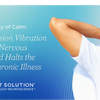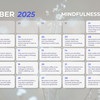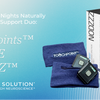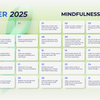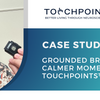3 Myths About ADHD That Will Surprise You

Myth 1. ADHD Gets Better With Age
Think most people outgrow ADHD (Attention Deficit Hyperactivity Disorder) as they age?
Think again! ADHD affects 11% of school-age children (4-17) and symptoms continue into adulthood in more than 75% of children. Boys are over twice as likely to be diagnosed with ADHD (13.3%) compared to girls (5.6%).
“The hyperactivity in children with ADHD can morph into an internal restlessness in many adults, but problems with attention, finishing tasks, and living up to one’s potential don’t necessarily go away in most cases” according to Dr. Serin. In many cases, ADHD requires ongoing treatment or strategies to manage it over someone’s lifespan.
Myth 2. ADHD Looks the Same for Everyone
Most assume that ADHD is a diagnosis that is separate from other problems. However, up to 30% of children (1 out of 5 children) and up to 53% (1 out of 2 adults) of adults with ADHD also have anxiety disorder. Individuals with ADHD and anxiety may worry about multiple things (school, work, etc.) and may feel tense, easily stressed out, or experience difficulty getting restful sleep.
Dr. Serin notes “the brain runs on networks, not with distinct, separate areas that operate alone. If one hub in a network is not working properly, multiple problems can result. We call this co-morbidity- meaning there is more than one problem in the same person.”
Myth 3. People with ADHD Don’t Care
Ever heard that people with ADHD don’t care about things and are apathetic? On the contrary, the most common co-morbid anxiety disorders found with ADHD are as follows:
- Generalized Anxiety Disorder (72%)
- Social Anxiety Disorder (44%)
- Obsessive-Compulsive Disorder (28%)
Take note, that means about 3 out of every 4 people with ADHD also has anxiety! Dr. Serin notes “It’s important not to overlook other problems just because someone has ADHD as a primary diagnosis.” Using TouchPoints™ can help with comorbid anxiety and emerging research also suggests it may help with focus and hyperactivity in people with ADHD.
TouchPoints™ customers with ADHD are finding relief in helping manage anxiety, focusing, getting tasks finished, and reducing hyperactivity in some cases. If you are in Arizona and would like to be a part of our ongoing research, please contact us at hello@thetouchpointsolution.com. Have a success story to share? We’d love to hear from you! Call us at 877-788-6824 or email us at hello@thetouchpointsolution.com. Together we can help those with ADHD manage daily struggles and live their best lives.
Tips for parents: Have your kids try TouchPoints™ original on the focus setting while they are getting ready for school for 20 minutes. See if their executive functions improve. Kids distracted during homework time? Try the focus setting during homework and let us know how much time and struggle you save. Try the sleep setting for 15 minutes at night if your child has problems winding down. And don't forget yourself! Parents with children who have ADHD report more irritation and overwhelmed feelings on a daily basis. Use TouchPoints™ to calm down and enjoy the day!
National Resource Center on ADHD. About ADHD. Retrieved from http://www.chadd.org/Portals/0/Content/CHADD/NRC/Factsheets/aboutADHD.pdf
National Resource Center on ADHD. ADHD and coexisting disorders. Retrieved from http://www.chadd.org/Portals/0/Content/CHADD/NRC/Factsheets/coexisting.pdf
Tsang, T. W., Kohn, M. R., Efron, D., Clarke, S. D., Clark, C. R., Lamb, C., & Williams, L. M. (2015). Anxiety in young people with ADHD: Clinical and self-report outcomes. Journal Of Attention Disorders, 19(1), 18-26. doi:10.1177/1087054712446830
-
Posted in
ADHD
